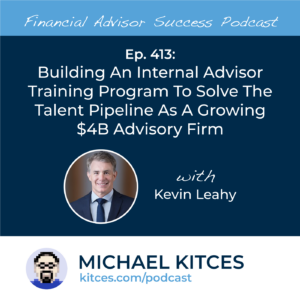Welcome to the December 2024 issue of the Latest News in Financial #AdvisorTech – where we look at the big news, announcements, and underlying trends and developments that are emerging in the world of technology solutions for financial advisors!
This month's edition kicks off with the news that the retail brokerage platform Robinhood is acquiring RIA custodian TradePMR, which appears to be less about Robinhood wanting to compete with the likes of Schwab and Fidelity in the custodial space and more about keeping the assets of its wealthier customers "on-platform" by giving them referrals to advisors who will keep them at Robinhood rather than pulling them to a different custodian (while simultaneously benefiting from the lucrative referral fees that advisors may be willing to pay for referrals from Robinhood's next-generation client base)
From there, the latest highlights also feature a number of other interesting advisor technology announcements, including:
- All-in-one platform Advyzon has announced the upcoming launch of Auria, a family office platform targeted at advisors of ultra-high-net-worth clients, which serves to highlight how the gap between technology needs for UHNW and non-UHNW clients is shrinking as alternative assets like hedge funds and private equity become more available to 'mere' mass affluent and HNW clients, which might create more competition for platforms like Addepar and Black Diamond that have made their names working with an exclusively UHNW base
- Paid lead generation service SmartAsset has announced the launch of two new prospecting tools, further expanding on its recent rollout of solutions that help advisors with nurturing and marketing to the leads it provides (which serves to highlight the hunger for solutions that can help advisors across the entire marketing funnel, not just on the top end with lead generation or the bottom with marketing and sales)
- Zeplyn, an AI-powered meeting note tool, has raised $3 million in seed capital as it seeks to differentiate itself as the "most accurate" AI note taking solution rather than on the breadth of different functions it can perform, which makes sense in an era when advisors are increasingly wanting "best-of-breed" solutions over "all-in-one", though it will still be difficult to stand out as a relatively new provider in what has become a very crowded market for AI meeting notes
Read the analysis about these announcements in this month's column, and a discussion of more trends in advisor technology, including:
- Advisor CRM has launched as the latest of what has become an increasing number of CRM tools that seek to improve on the functionality of traditional CRM tools by including more workflow capabilities, automated portfolio management, billing, and other functions, which speaks to the relative dissatisfaction advisors have with the existing options for CRM solutions (although it's still not certain what the 'right' amount of capabilities is that advisors will still be willing to pay for)
- Ezra Group, which has been using its proprietary Integration Score to objectively rate the integration capabilities of over 500 AdvisorTech solutions, has announced a new portal where technology providers can enter their own information to update their scores, allowing for faster updating as technologies' capabilities change, and ideally creating more transparency into solutions' actual integration capabilities (and more incentive for providers to improve the depth and usefulness of their integrations with other technology)
And be certain to read to the end, where we have provided an update to our popular "Financial AdvisorTech Solutions Map" (and also added the changes to our AdvisorTech Directory) as well!
*And for #AdvisorTech companies who want to submit their tech announcements for consideration in future issues, please submit to [email protected]!




